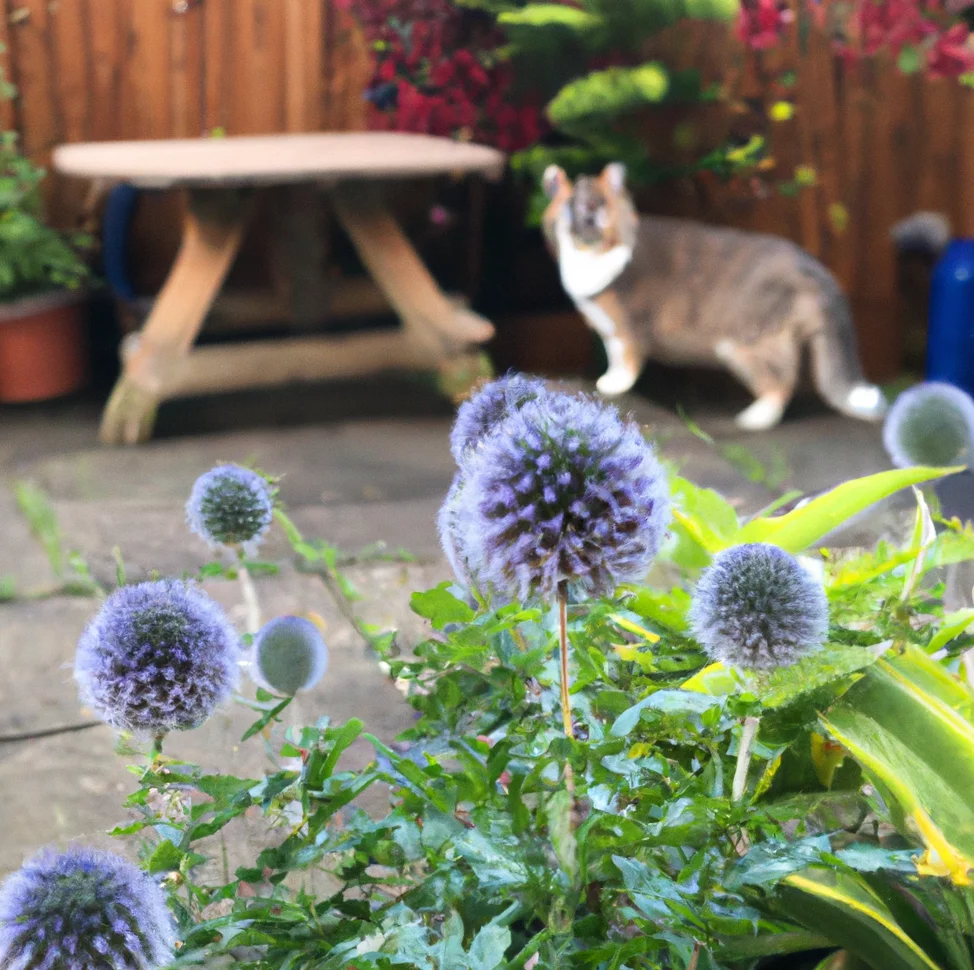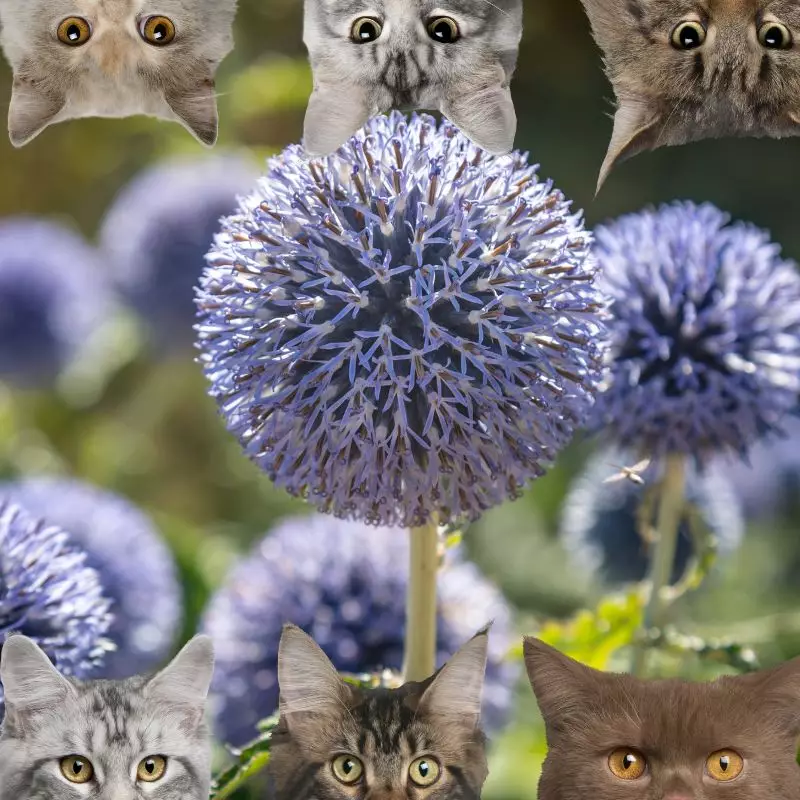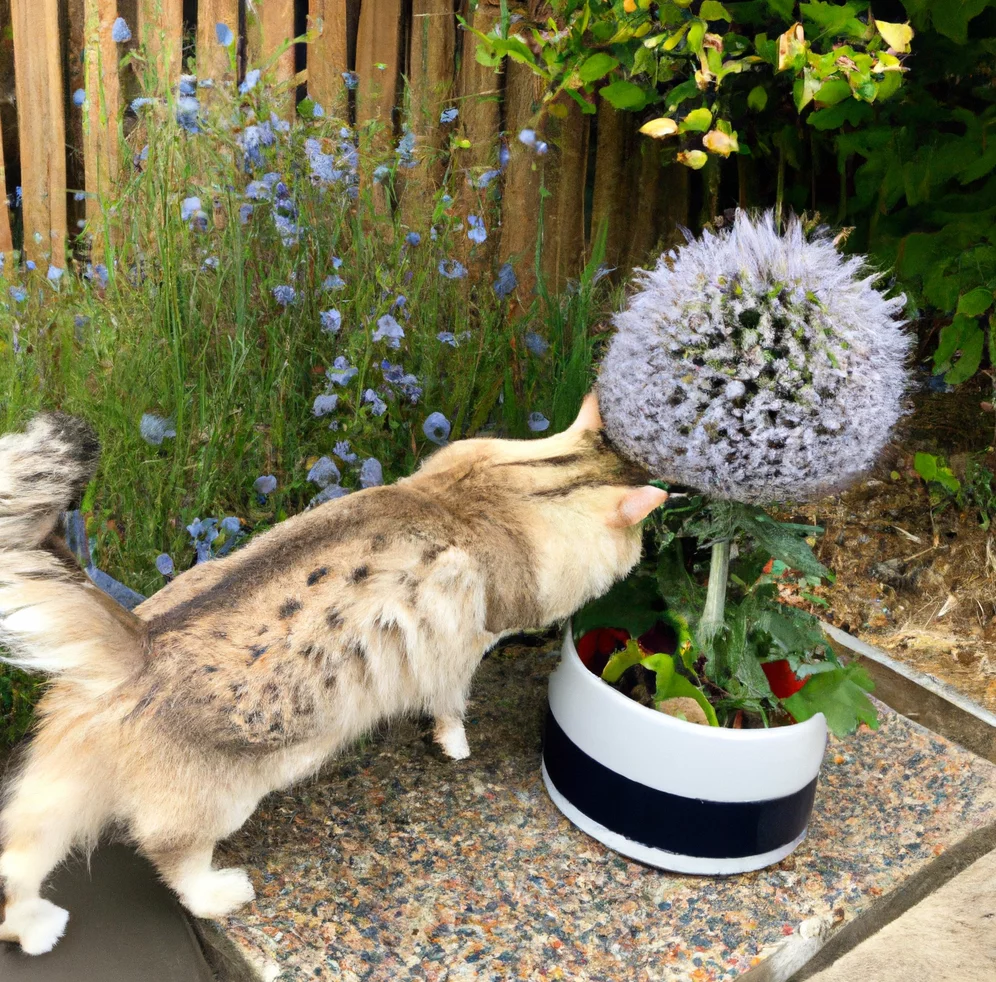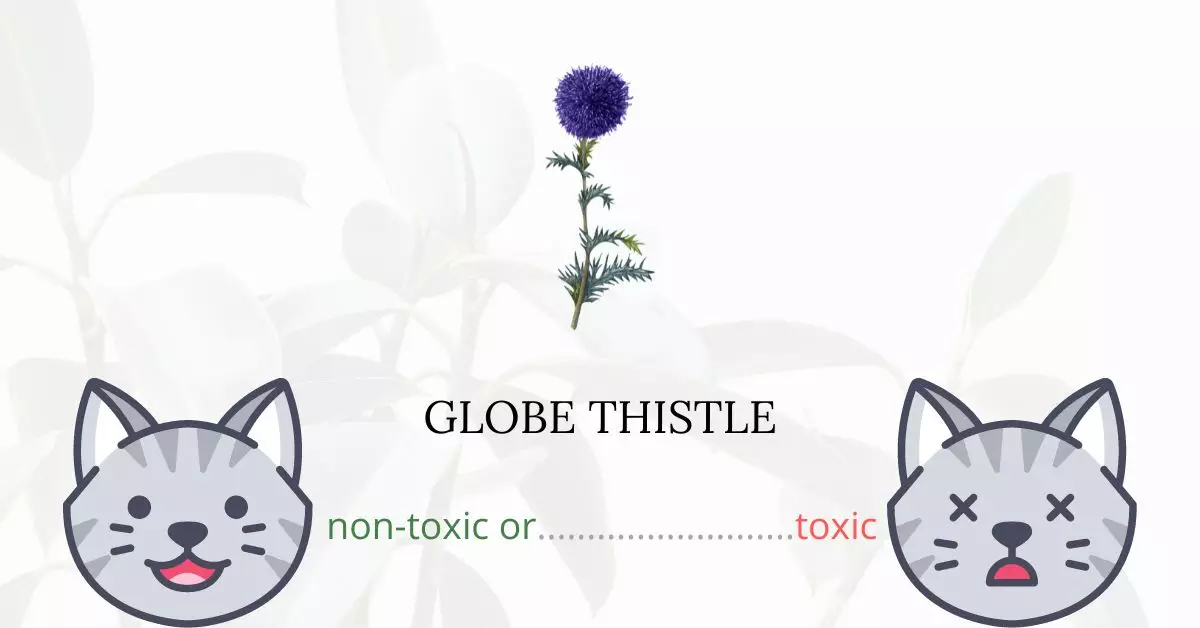Globe Thistle is non-toxic for cats, making it a safe choice as an indoor ornamental plant.
This article has been meticulously crafted in collaboration with a team of experienced DVMs (doctors of veterinary medicine). Through their insights and expertise, we ensure the provision of accurate and up-to-date information regarding the potential risks associated with various plants, specifically the Globe Thistle, and their effects on cats. Furthermore, our claims are reinforced through extensive research on high-authority websites, including the American Society for the Prevention of Cruelty to Animals (ASPCA) and PetMD.
Can Cats Eat Globe Thistle?
 These perennials’ spiky leaves and blooms wouldn’t be very alluring to cats, but even if they were, they wouldn’t be harmful if ingested. In general, cats are unharmed by modest amounts of this plant. Remember that allergic reactions can happen at any time.
These perennials’ spiky leaves and blooms wouldn’t be very alluring to cats, but even if they were, they wouldn’t be harmful if ingested. In general, cats are unharmed by modest amounts of this plant. Remember that allergic reactions can happen at any time.
Since they must consume meat to survive, cats are obligate carnivores and depend on it for vital nutrients including vitamins, minerals, fatty acids, and amino acids (i.e. taurine). The digestive system of cats can only utilize nutrients from meat and fish.
What is Globe Thistle?

About 120 species of flowering plants belong to the genus Echinops, which is often known as globe thistles. They produce spherical blue or white flowers and have spiky foliage. They are indigenous to Europe, eastern central Asia, and southern African mountains.
One of the most exquisite blue hues in the plant kingdom is offered by the globe thistle. The spherical flowers emerge from lengthy stems resembling spiky balls. The spheres are covered in star-shaped, sky-blue blossoms as each steel blue bud unfolds.
These blossoms will attract a wide variety of pollinators once they have fully opened. Even the globe thistle’s leaves are distinctive. When young, the plant may seem like a weed, yet its abrasive texture can give the garden a distinctive appearance. The bicolor look is created by the soft green leaves’ dazzling white undersides.
There is a considerable potential that these plants may self-seed in your yard because they produce a lot of seeds when they finish off their flower display.
Keeping Cats Away From Globe Thistle

Cats can ruin gardens by gnawing, digging (and leaving uninvited deposits), and using plants as soft places to rest. Although there isn’t any concrete proof that plants can keep obnoxious cats away on their own, it’s worthwhile to try to change your cat’s undesirable behavior using safe repellents.
Tape works to repel cats by using the element of surprise and is non-toxic and inexpensive. The cat will be considerably less likely to jump up the first time or two it has to cope with these bothersome adhesives.
Your cat might not even notice your plants if they’re in a soft mulch of grass clippings in a semi-shaded garden bed. Put safe delicacies like cat grass, cat mint, or pansies.
Plants to Avoid For Your Cats
If you are a cat owner and unsure if the plants growing in your yard are harmful to your cats, check out this list of toxic plants for cats. You can also check our list of non-toxic plants for cats.





